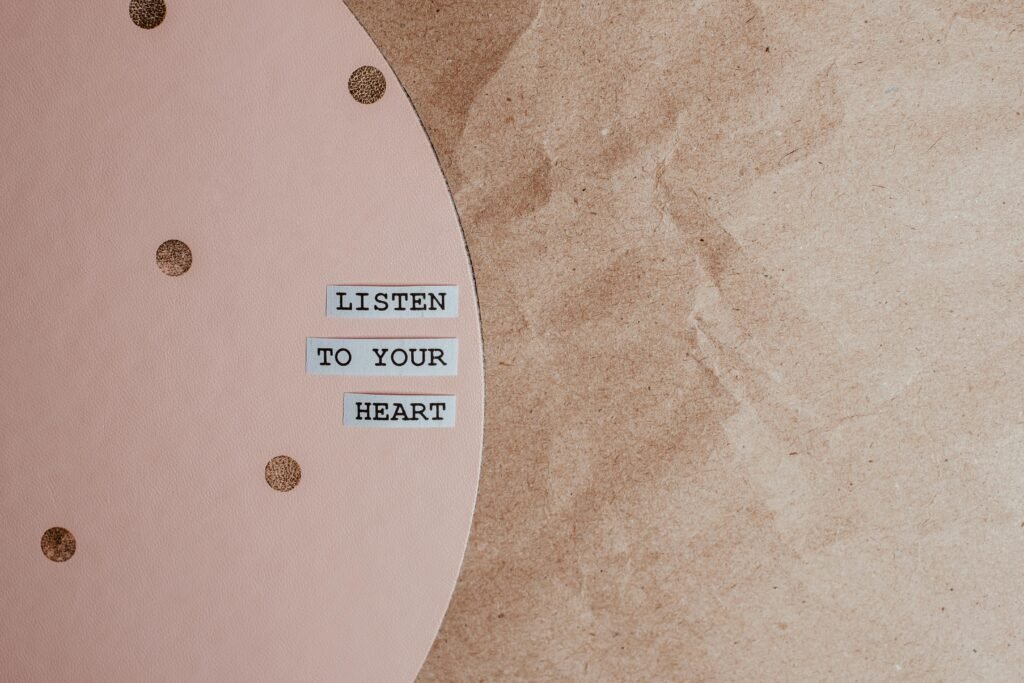In the dynamic world of romantic relationships, the significance of non-verbal communication cannot be underestimated. This intriguing article delves into the role that non-verbal cues play in fostering deeper connections between partners. From the tender touch of a hand to the subtle raise of an eyebrow, these non-verbal expressions can convey a wealth of emotions and intentions that words alone often fail to capture. So, grab a cup of tea, sit back, and prepare to explore the captivating world of non-verbal communication in romance.
The Importance of Non-Verbal Communication
Non-verbal communication plays a crucial role in romantic relationships, as it goes beyond words and helps facilitate understanding and empathy between partners. While verbal communication is important, non-verbal cues provide additional context and meaning to our interactions. They convey emotions, intentions, and attitudes that words alone often cannot express. By paying attention to and interpreting non-verbal cues, you can deepen your connection, establish trust, and enhance the overall quality of your relationship.
Facilitating Understanding and Empathy
Non-verbal communication can help partners better understand each other’s feelings and needs. Facial expressions, body language, and gestures all contribute to conveying emotions and intentions. When you are able to pick up on these cues, you can respond to your partner with greater empathy and sensitivity. For example, if your partner looks sad or troubled but says they are fine, their non-verbal communication may be indicating that they need support and understanding. By being attuned to their non-verbal cues, you can provide the emotional support they may be seeking.
Expressing Intimacy and Connection
Non-verbal cues are instrumental in expressing intimacy and connection in romantic relationships. Physical touch, such as holding hands, hugging, or cuddling, can convey affection, love, and a sense of closeness. These non-verbal expressions of intimacy can deepen the emotional bond between partners and create a stronger sense of connection. Additionally, non-verbal cues like eye contact, smiling, and playful teasing can communicate attraction and interest, enhancing the romantic dynamics between partners.
Establishing Trust and Credibility
Non-verbal communication also plays a vital role in establishing trust and credibility in a romantic relationship. Your non-verbal cues can either reinforce or contradict the words you speak. For instance, maintaining eye contact, using open and relaxed body language, and displaying genuine facial expressions can help convey sincerity and trustworthiness. On the other hand, avoiding eye contact, crossing your arms, or exhibiting defensive body language may create a barrier to trust and undermine your credibility. Being aware of and aligning your non-verbal cues with your verbal messages can enhance the trust between you and your partner.
Types of Non-Verbal Communication in Romantic Relationships
Understanding the various types of non-verbal communication in romantic relationships can help you navigate and interpret the cues you encounter.
Body Language
Body language encompasses a wide range of non-verbal cues, including posture, gestures, and overall body movements. Paying attention to your partner’s body language can offer valuable insights into their emotional state and intentions. For example, crossed arms or a slumped posture may indicate defensiveness or disinterest, while an open and relaxed stance can signal receptiveness and engagement.
Facial Expressions
Facial expressions are powerful indicators of emotions and can reveal the true feelings behind words. A smile can communicate happiness, warmth, and affection, while a furrowed brow may indicate concern or worry. The eyes, in particular, can convey a wealth of emotions, from joy and excitement to sadness and longing. Understanding and empathizing with your partner’s facial expressions can strengthen emotional connection and foster better communication.
Gestures and Touch
Gestures and touch in a romantic relationship can speak volumes about affection, support, and connection. Holding hands, a gentle touch on the arm, or a comforting hug can all convey love, empathy, and a sense of security. Similarly, the absence of touch or gestures can sometimes be indicative of a lack of emotional availability or closeness. Understanding your partner’s preferred level and type of touch can enhance communication and emotional intimacy in your relationship.
Posture and Proximity
Posture and proximity can communicate a range of emotions and intentions in a romantic relationship. Sitting or standing close to your partner can signify a desire for closeness and connection, whereas leaning away or having a closed posture may indicate discomfort or disengagement. Being aware of your own posture and respecting your partner’s personal space can contribute to a more harmonious and respectful dynamic.

Non-Verbal Cues in Romantic Interactions
When it comes to romantic interactions, non-verbal cues can influence various aspects of the relationship, including flirting, conflict resolution, and emotional support.
Flirting and Attraction
Non-verbal cues play a significant role in flirting and conveying attraction between partners. Smiling, making prolonged eye contact, playful teasing, and leaning in closer are all ways to show interest and create a sense of chemistry. These non-verbal cues can build anticipation and excitement, fostering a positive connection between partners.
Conflict Resolution
Non-verbal communication is essential during conflict resolution in romantic relationships. Body language can convey whether someone is open to discussion or defensive. Maintaining calm and open body language, using appropriate hand gestures, and practicing active listening can help de-escalate conflicts and facilitate productive dialogue. Conversely, defensive postures, avoiding eye contact, or aggressive gestures can hinder effective conflict resolution.
Affection and Emotional Support
Non-verbal cues are instrumental in demonstrating affection and providing emotional support to your partner. A comforting touch, a warm embrace, or a gentle stroke on the back can convey empathy, care, and understanding. Non-verbal cues of affection can help your partner feel loved, acknowledged, and emotionally supported, contributing to a healthier and more satisfying romantic relationship.
The Role of Non-Verbal Communication in Attraction and Initial Stages of Relationship
Non-verbal communication plays a vital role in the attraction and initial stages of a romantic relationship. It sets the stage for further connection and can help partners establish rapport and mutual interest.
Initial Attraction
Non-verbal cues often play a significant part in initial attraction between individuals. They can manifest in subtle ways, such as prolonged eye contact, smiling, or mirroring each other’s gestures. These cues can create a sense of familiarity, comfort, and intrigue, laying the foundation for further exploration and connection.
Flirting and Courtship
Flirting and courtship heavily rely on non-verbal communication. Through playful teasing, gentle touches, and engaging body language, individuals can convey their interest and attraction to one another. Flirting allows partners to test the waters, gauge each other’s response, and build rapport. Non-verbal cues during this stage can provide insight into mutual compatibility and interest, guiding the progression of the relationship.

Non-Verbal Communication in Maintaining and Deepening Romantic Relationships
Even after the initial stages, non-verbal communication remains crucial for maintaining and deepening romantic relationships.
Expressions of Love and Affection
Non-verbal cues, such as physical touch, loving gazes, and warm smiles, continue to be essential in expressing love and affection as a relationship progresses. These cues help to fortify the emotional bond between partners and reinforce the feelings of love and connection.
Non-Verbal Cues of Trust and Commitment
Non-verbal communication can also serve as indicators of trust and commitment in a romantic relationship. When partners maintain eye contact during important conversations, use open body language, and make efforts to physically connect, it demonstrates a sense of trustworthiness and emotional investment. These non-verbal cues enhance the overall sense of security, stability, and partnership within the relationship.
Non-Verbal Communication for Emotional Support
During challenging times or moments of vulnerability, non-verbal communication becomes even more important. A comforting touch, a warm embrace, or simply sitting close to each other can offer immense emotional support. Non-verbal cues of empathy and understanding can help partners feel safe and valued, fostering a deeper emotional connection.
Miscommunication and Non-Verbal Signals in Romantic Relationships
Despite the importance of non-verbal communication, miscommunication can still occur, especially when interpreting mixed signals or mismatched non-verbal cues.
Interpreting Mixed Signals
Mixed signals can arise when verbal and non-verbal cues are inconsistent. For example, your partner may say they are fine but exhibit signs of distress through their body language or facial expressions. In such situations, it is crucial to trust your instincts, ask open-ended questions, and create a safe space for open dialogue. Clear and honest communication can help navigate through the confusion and ensure mutual understanding.
Mismatched Non-Verbal Communication
Mismatched non-verbal communication can arise when partners have different cultural backgrounds or individual communication styles. For instance, one partner may rely more on touch, while the other prefers personal space. Recognizing and respecting these differences is crucial for effective communication in a romantic relationship. Open discussions about individual preferences and cultural influences can help bridge the gap and create a harmonious communication style.

Cultural Differences in Non-Verbal Communication in Romantic Relationships
Non-verbal communication is deeply influenced by cultural factors, and these cultural variations can significantly impact interactions within romantic relationships.
Cultural Variations in Body Language
Different cultures have distinct body language norms and interpretations. For example, in some cultures, maintaining direct eye contact during conversation is a sign of respect and attentiveness. In contrast, other cultures may view prolonged eye contact as confrontational or disrespectful. Understanding and respecting these cultural variations in body language can minimize misunderstandings and promote effective communication.
Different Meanings of Non-Verbal Gestures
Non-verbal gestures can also have different meanings across cultures. For example, the “okay” gesture, which involves forming a circle with the thumb and index finger, is commonly understood as a positive affirmation in Western cultures. However, in some Middle Eastern or South American cultures, this gesture may be considered offensive. Being aware of these cultural nuances and seeking to understand your partner’s cultural background can help prevent unintentional misunderstandings.
Improving Non-Verbal Communication in Romantic Relationships
Improving non-verbal communication in romantic relationships is an ongoing process that requires awareness, active listening, and open communication.
Awareness of Non-Verbal Cues
Developing awareness of your own non-verbal cues and those of your partner is the first step toward improving non-verbal communication. Paying attention to your body language, facial expressions, and gestures can help you understand how you may be conveying certain messages. Similarly, being observant of your partner’s non-verbal cues can deepen your understanding of their emotions and needs.
Active Listening and Observation
Active listening goes hand-in-hand with non-verbal communication. When engaged in conversation, make a conscious effort to focus on your partner, maintain eye contact, and avoid distractions. Actively listen to both their verbal and non-verbal cues, allowing you to respond appropriately and empathetically. Observation, coupled with active listening, can provide valuable insights into your partner’s emotional state and foster better communication.
Open Communication and Feedback
Clear and open communication is vital for improving non-verbal communication in a romantic relationship. Encourage open dialogue where both partners can share how certain non-verbal cues make them feel. Discuss preferences, cultural influences, and individual needs pertaining to non-verbal communication. Regularly seeking and providing feedback can create an environment of mutual understanding and continual improvement.
Non-Verbal Communication in Long-Distance Relationships
Non-verbal communication becomes even more critical in long-distance relationships, as partners rely heavily on alternative means of communication.
Utilizing Technology
Technology can play a significant role in enhancing non-verbal communication in long-distance relationships. Video calls, for example, allow partners to virtually see each other’s facial expressions, gestures, and body language. Hearing the tone of voice and seeing non-verbal cues in real-time can bridge the physical distance and maintain a sense of emotional closeness.
Importance of Non-Verbal Cues in Communication
In the absence of physical proximity, non-verbal cues can help fill the gaps in communication in long-distance relationships. Emoticons, emojis, and gifs can convey emotions and add context to text-based conversations. Sending voice messages or recording videos can also provide a more personal touch, allowing partners to discern verbal and non-verbal cues more accurately.
Conclusion
Non-verbal communication is an integral part of romantic relationships. It facilitates understanding, expresses intimacy, and establishes trust. Various forms of non-verbal cues, including body language, facial expressions, gestures, and touch, play unique roles in romantic interactions. They influence attraction, courtship, conflict resolution, and emotional support. Cultural differences and potential miscommunications highlight the need for awareness, active listening, and open communication. Utilizing non-verbal cues in long-distance relationships and leveraging available technology can help bridge the physical gap. By recognizing and improving non-verbal communication, partners can strengthen their connection, deepen their bond, and foster a more fulfilling and harmonious romantic relationship.
Christopher Conway, the innovative mind behind “Love Blueprints,” is a seasoned relationship expert and author. His insightful guidance, drawn from years of experience and study, offers transformative strategies for modern love and dating. Christopher’s commitment to enhancing romantic connections has made “Love Blueprints” a go-to resource for those navigating the complexities of relationships.




